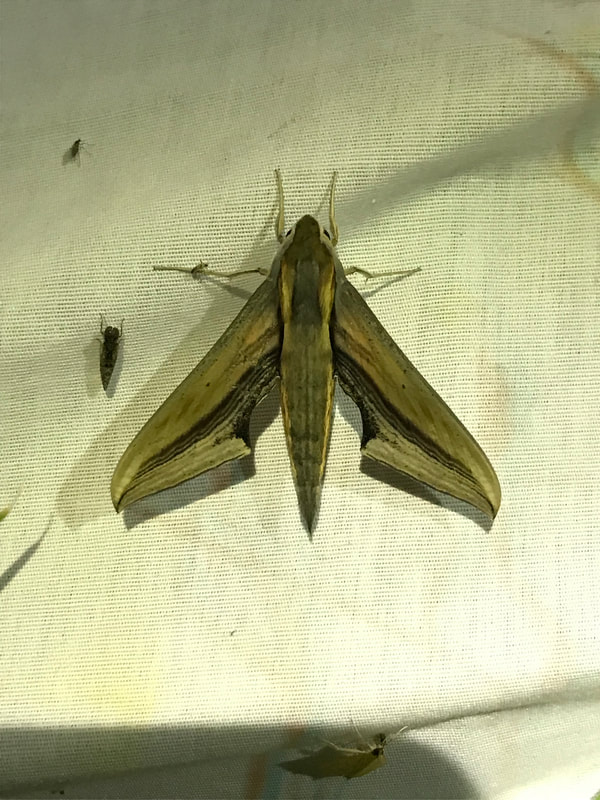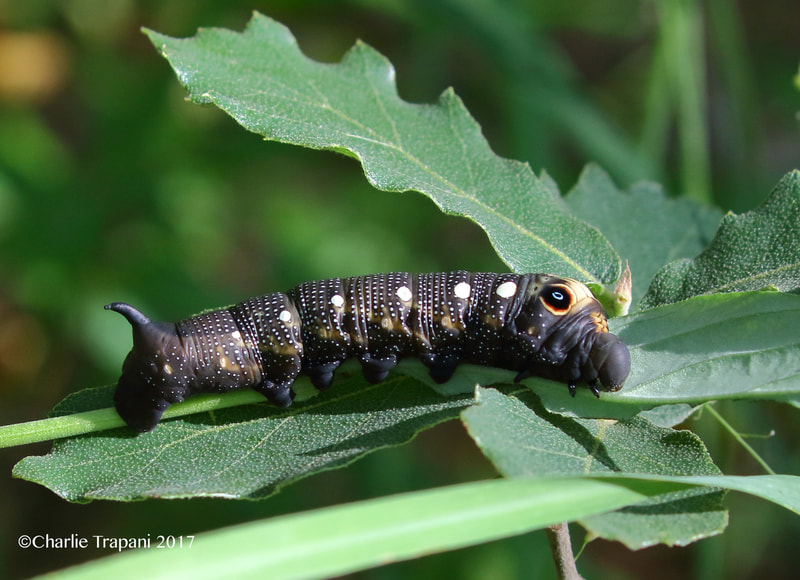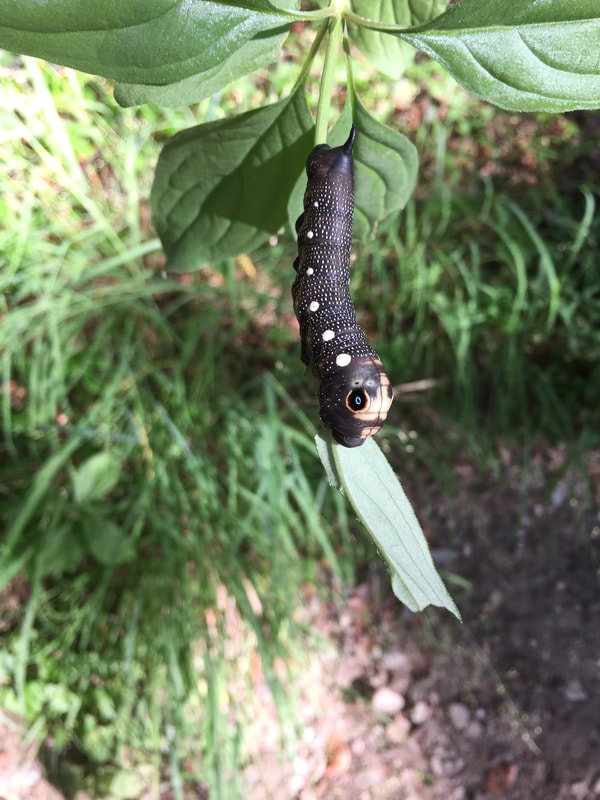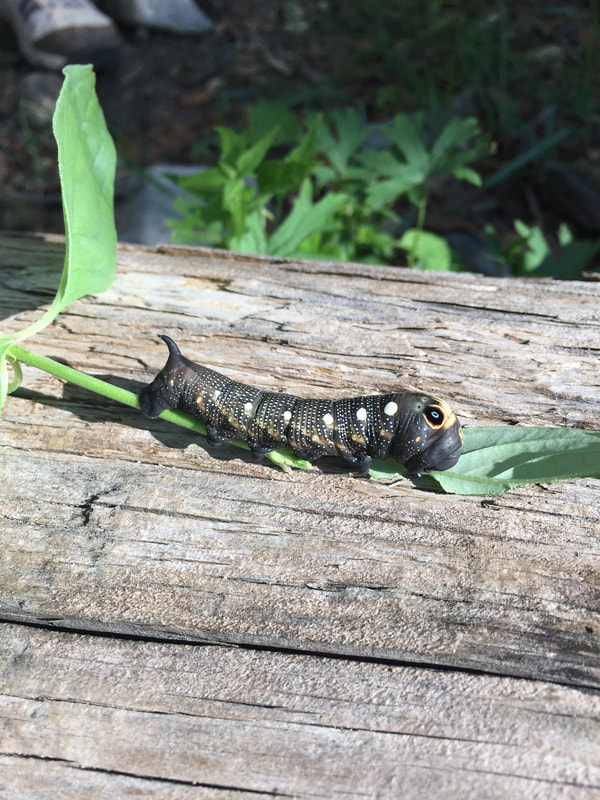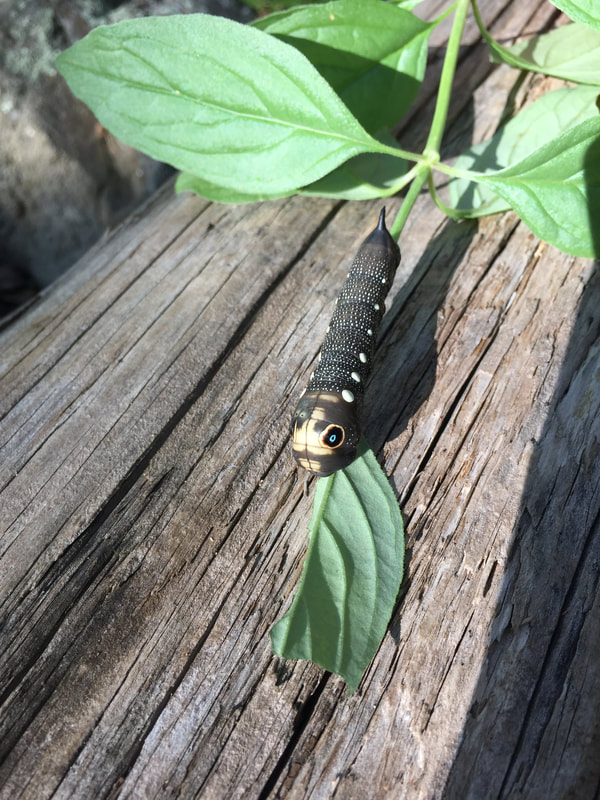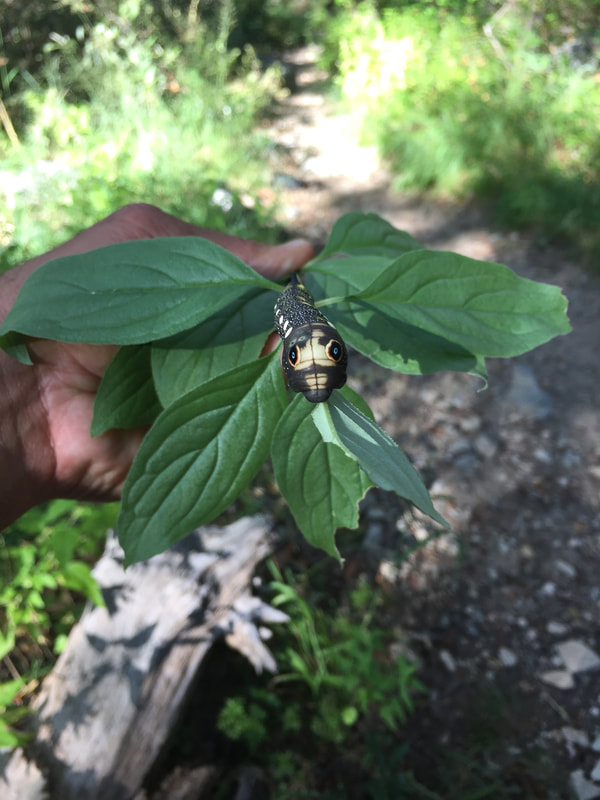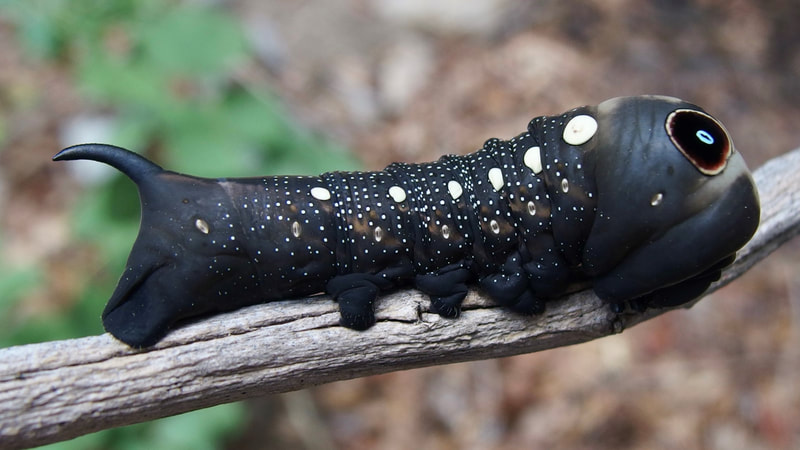|
Common Name(s): Falcon Sphinx, Falco Sphinx
Ecology and Life History Overview: This is another moth closely linked to the monsoon season in the American Southwest. There are records from Texas as well, and most records are in July-August (2). This moth can be found in many of the canyons in Southeastern Arizona. The adult moths can be quite prevalent in the right season, with numbers of them coming into light. Tuttle notes seeing an adult feeding at dusk on Bouvardia (2). Adult flight seems to peak between 2300-0200 hours. Habitat and Searching for Larvae: This moth is found at moderate elevations where it’s hostplant Bouvardia glaberrima grows (2). While the plant is found at lower elevations, it is associated with steep slopes and rocky outcroppings (2). Searching for larvae is best done visually as it appears the larvae hide in the center of the plant during the day, only coming out to feed at night, larvae can be hard to locate (2). Because of the bright white spots and eyespots on the larvae, it would almost certainly reflect UV light and searching for larvae using this method may be fruitful. Rearing Notes: [Coming Soon] Adult description: The forewings of this moth have distinctly curved inner margins. The forewing color itself is a light beige color (sometimes with greenish casts), with a thick black streak, paralleled by thinner, smaller black lines run from the basal area to the apex of the wing. The submarginal area is often covered in a series of fading parallel black lines. The subbasal are of the moth’s forewings are sometimes dusted in a pink or brownish-pink cast. The thorax is orange and brown on either side with a heather gray middle section. The hindwings are unremarkable and are simply grayish-beige in color with a black line running along the bottom. |
Larval description:
L5: Like other Xylophanes this species has large fake eyespots on it’s thoracic segments. This species has two distinct spots and then a series of white circles on the abdominal segments. The overall appearance and color of the larva is black and the short, black (sometimes with a bluish cast) caudal horn is pointed backward. Hostplants Click here to load this Caspio Cloud Database
Cloud Database by Caspio |
The gallery to the left contains photos of Xylophanes falco adults. The data for each photo can be found by clicking on it. If you have a photo that you would like to submit to us, please contact us using the link at the bottom of the page.
The gallery to the right contains photos of Xylophanes falco larval and pupal stages. The data for each photo can be found by clicking on it. If you have a photo that you would like to submit to us, please contact us using the link at the bottom of the page.
The gallery to the right contains photos of Xylophanes falco larval and pupal stages. The data for each photo can be found by clicking on it. If you have a photo that you would like to submit to us, please contact us using the link at the bottom of the page.
|
|






